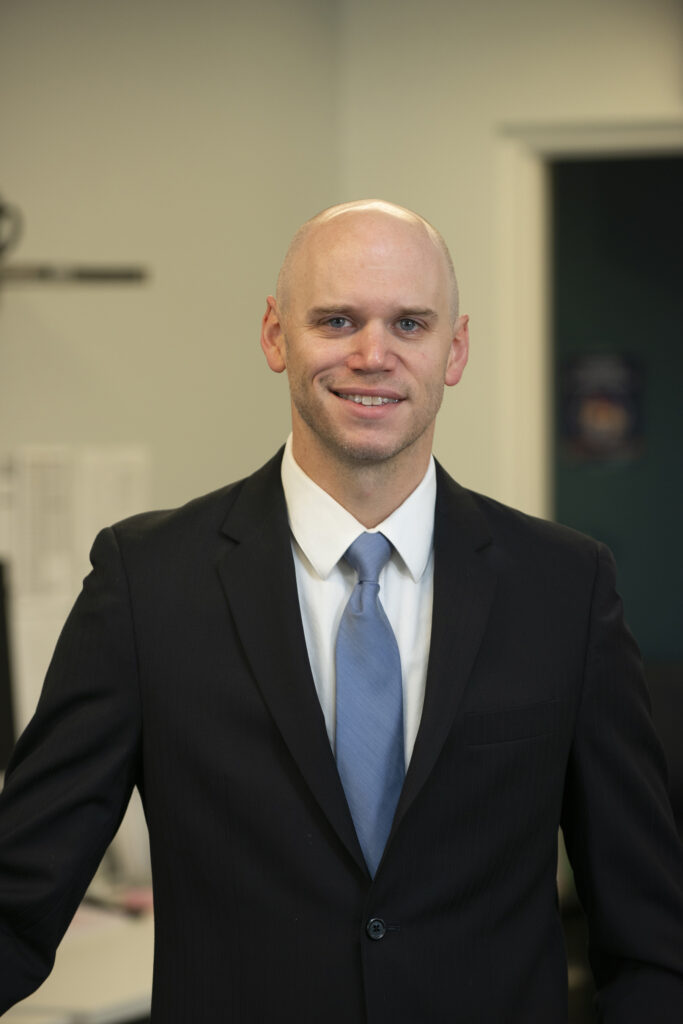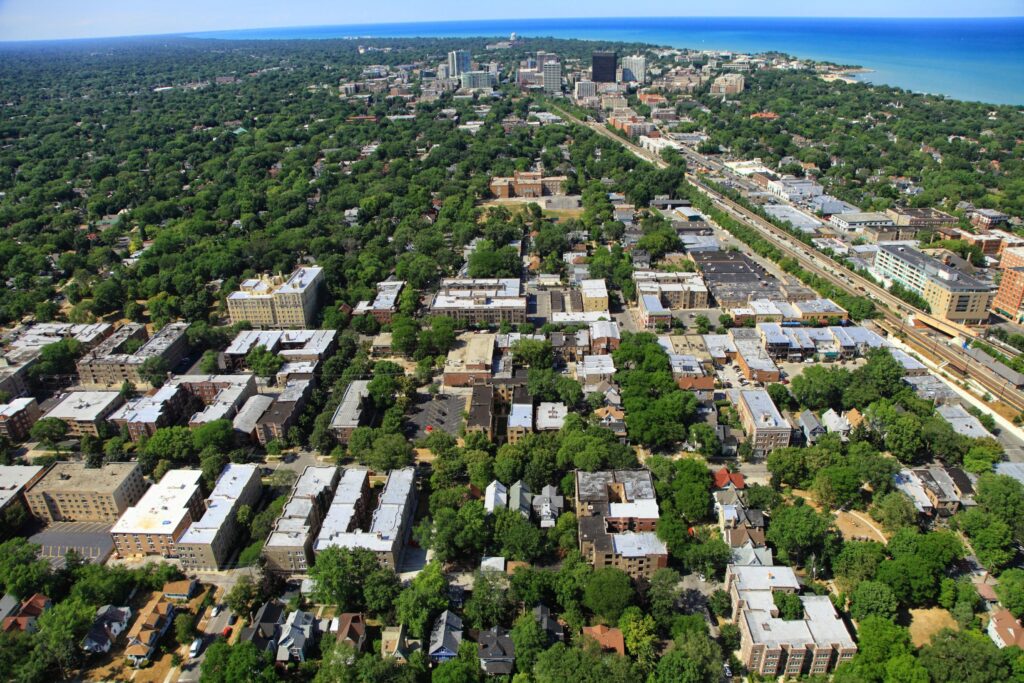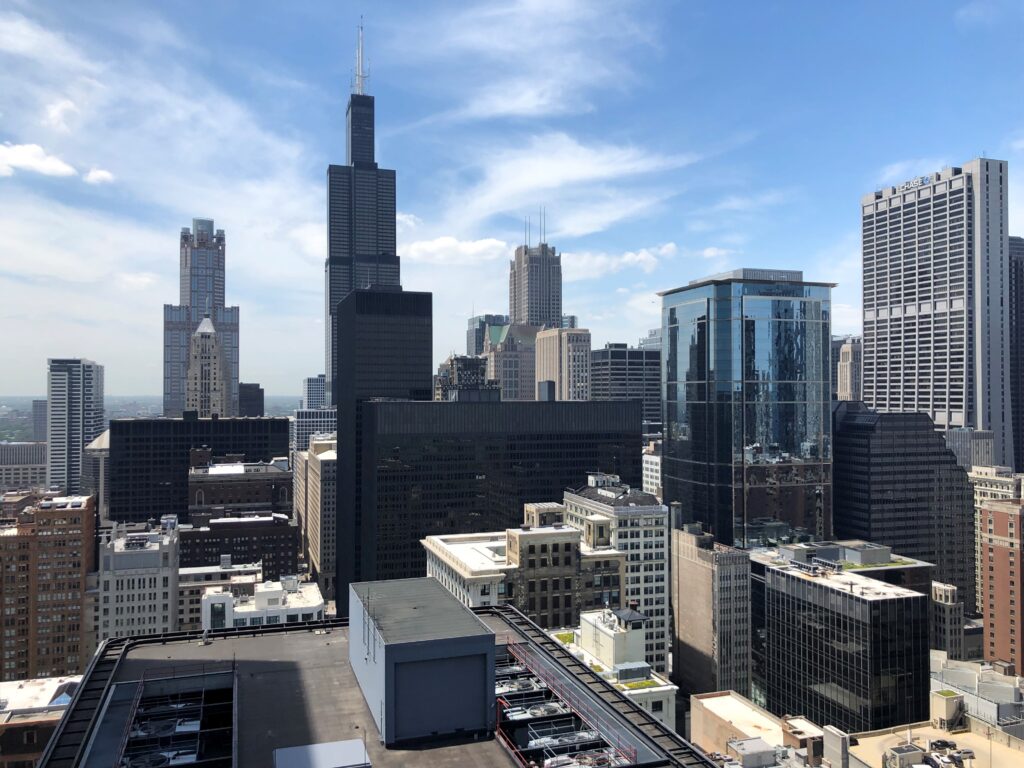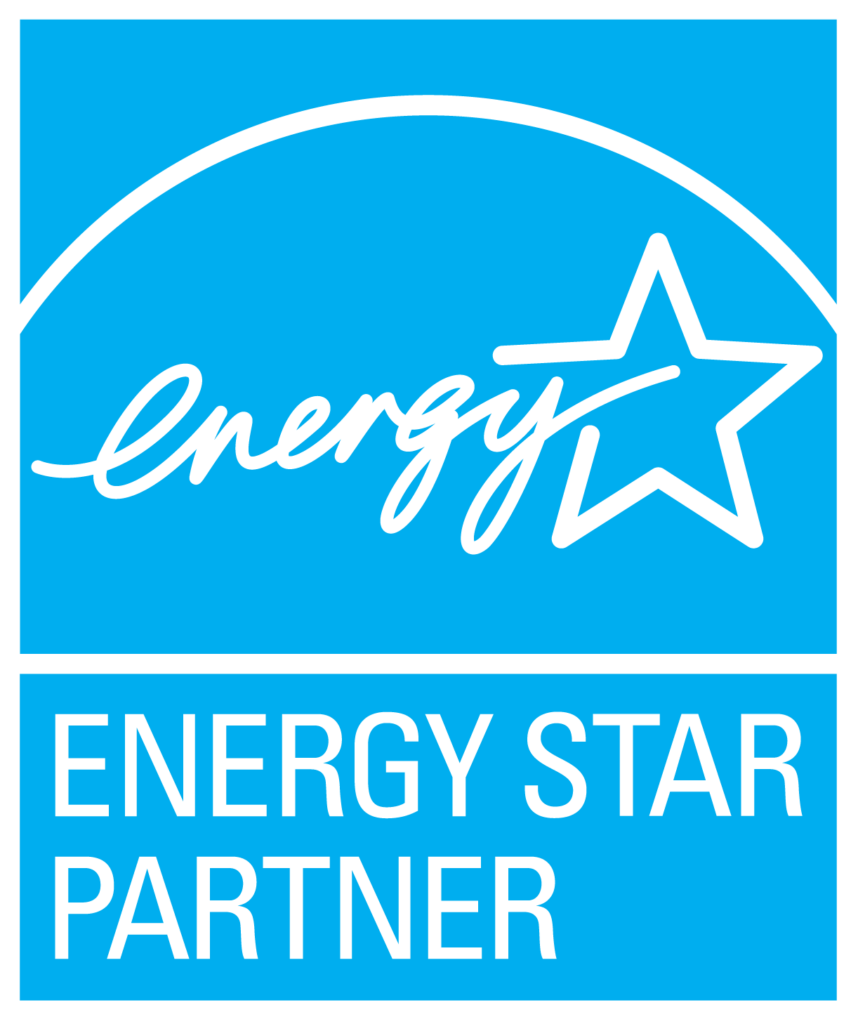What Does Adam Do? 
Mr. Sanders is a 19-year industry veteran and a Project Engineer for a wide variety of multi-disciplinary, specialized projects. Working with a team of engineers, designers, and support staff, he often serves as the Lead Engineer and Primary Contact for Elara’s clients in the commercial office and multi-family markets.
With a strong reputation for successfully completing highly complex projects in occupied buildings, he is passionate and committed to delivering sustainable solutions that improve building operations, enhance occupant comfort, reduce energy costs, and increase asset value. Over his career at Elara, he has gained significant expertise related to mechanical, electrical, plumbing and fire protection solutions including riser replacements in occupied, high-rise buildings, boiler and chiller replacements, air handling unit replacements, domestic booster pump and hot water heater replacements, de-watering strategies, renovations, and new construction. He also has extensive experience in the design, troubleshooting, functional testing, commissioning of building systems such as boilers, chillers, AHUs, domestic water systems, waste and vent piping systems, and controls.
Through his years of experience in high rise condominium buildings, Mr. Sanders has become an experienced technical resource for reserve studies and estimating project costs while providing guidance to property managers and boards of directors.
His Areas of Expertise.
- Technical Knowledge
- Industry Experience
- Sustainable Design
- Innovation
- Construction Knowledge
- Master Planning
- Cost Estimating
- Controls & Commissioning
- Troubleshooting
- Collaboration
- Project Management
- Experience in Multiple Markets
Mr. Sanders is driven by superior client service, collaboration, innovation (thinking outside the box) and an unyielding passion to successfully complete complex, challenging projects in occupied, high-rise buildings that require extensive planning, effective communication, and close collaboration with all stakeholders involved. These attributes have secured for Elara’s clients a long list of successful projects – including four ASHRAE Illinois Chapter First-Place Awards — while also benefitting those that have worked with Adam as he is eager to transfer his knowledge, lessons learned, and expertise to clients and fellow employees.
Key Project Contributions.
- 33 West Ontario Fan Coil Riser Anchor Upgrades (Lead Engineer)
- 3900 N. Lake Shore Drive Plumbing System Replacement and Conversion to Multiple Pressure Zones (Lead Engineer)
- 1660 N. LaSalle Plumbing System Replacement and Mechanical Upgrades (Lead Engineer)
- LUC Center for Translational Research Education (CTRE) LEED Enhanced Commissioning (Lead Engineer)
- 2950 North Sheridan LEED Fundamental Commissioning (Lead Engineer)
- LUC Mundelein Center Historic Landmark Phased (8-Year) Redevelopment (Lead Engineer)
- 2800 N LSD Domestic Water Riser Replacement (Lead Engineer)
- 3450 N LSD Domestic Water Riser Replacement and Bathroom Renovation (Lead Engineer)
- Newport Condominium Plumbing Piping Replacement (Lead Engineer)
- LUC Cudahy Library MEP Infrastructure Upgrades (Lead Engineer)
- Completion of over 30 riser studies.
Key Industry Contributions.
Adam is an eager and active participant in industry associations, a frequent author and contributor of published articles in various industry journals, and an often-requested panel participant and presenter at association meetings and conferences.
For example, in addition to being quoted in others’ articles in at least a half-dozen instances, some of Mr. Sander’s authored and co-authored articles include the following:
- Co-Author, “Electrical Vehicle Charging Station Retrofits for Existing Buildings,” Chicagoland Buildings + Environment, Spring 2022
- Author, “Common Questions and Answers to High-Rise Condominium Plumbing Riser Replacement Projects,” Chicagoland Buildings + Environment, Spring 2019
Mr. Sanders is a member of the Chicagoland Buildings and Environment Advisory Board and is a regular panel participant at the annual Condo Lifestyles State of the Industry event held in downtown Chicago every winter.
What People Are Saying About Adam.
”Adam is in a leadership position on my team and is a key contributor to the success of our company. While he is our most tenured employee, his passion for engineering and problem solving has only grown as he continually challenges himself to expand his expertise, product offering, and impact to our firm. Not only is Adam a reliable and knowledgeable advisor for our clients, he represents a strong technical resource, and sought after mentor for developing engineers and designers within our company. All of this is accompanied by a fun, outgoing personality and team player, who doesn’t hesitate to jump in when we need him. I am thrilled to be able to work closely with Adam and to celebrate his undeniable success.”
– Matt Swanson, Principal / Practice Leader – Elara Engineering
Life Before Elara.
Having grown up in Menomonee Falls, Wisconsin (outside Milwaukee), Adam attended the University of Wisconsin-Platteville (home of the Pioneers and Pioneer Pete) where he also worked as a Co-Op Intern at Pearson Engineering in Madison, Wisconsin. Tempted by warmer weather and a job offer upon graduation, Adam headed south to Illinois to take a job with Elara Engineering – and hasn’t looked back since!!
Prior to his current role and responsibilities at Elara Engineering, Adam was a Senior Mechanical Engineer and a Mechanical Engineer at Elara.
Life Outside Elara. 
Adam, his wife, and his two sons currently reside in Batavia, Illinois where he is an active BBQer and sometimes woodworker, fisherman, and rock/wall climber when time allows. When pressed about his backyard BBQ acumen, he revealed that his smoked brisket is always a party favorite among his many offerings of smoked turkey, pulled pork, beef ribs, smoked wings, and baby back ribs.
Although typically utilizing indoor vertical climbing walls, Adam – with ten years of climbing experience – has scaled several outdoor faces including Cleopatra’s Needle at Devil’s Lake, Wisconsin. Adam’s love of fishing – unabated since his childhood – started when he and his father would head out after dinner every night for their own personal fishing derby – with the loser having to scoop ice cream for the winner upon their return.
With a hectic work and personal life where his sons keep him busy and entertained, Adam has had to limit his time and allegiance to only one professional sports team…from one football team: the Green Bay Packers – to another football team: Liverpool FC.
More about Adam’s professional and technical abilities can be found at here.


























 lara Engineering would like to remind our clients that Energy Benchmarking for the City of Chicago and the City of Evanston are due this June. For more information about the ordinance and required compliance actions please see below and click
lara Engineering would like to remind our clients that Energy Benchmarking for the City of Chicago and the City of Evanston are due this June. For more information about the ordinance and required compliance actions please see below and click  City of Chicago Benchmarking Verification Due June 1st
City of Chicago Benchmarking Verification Due June 1st City of Evanston Benchmarking Verification Due June 30th
City of Evanston Benchmarking Verification Due June 30th its client, Colliers, Elara Engineering was informed by ComEd’s Energy Efficiency Program Team that its chiller replacement project at Two Prudential Plaza in downtown Chicago had been awarded a $400,000 incentive. The project scope included replacement of a large central plant chiller with a new variable speed chiller as well as control sequence optimizations which will lead to increased chiller plant efficiencies during operation. Nearly a dozen chiller options were analyzed as part of a life-cycle cost analysis which took into account first cost, energy efficiency, maintenance costs, and incentives. On average, it is anticipated that the new chiller will utilize approximately 30% less energy.
its client, Colliers, Elara Engineering was informed by ComEd’s Energy Efficiency Program Team that its chiller replacement project at Two Prudential Plaza in downtown Chicago had been awarded a $400,000 incentive. The project scope included replacement of a large central plant chiller with a new variable speed chiller as well as control sequence optimizations which will lead to increased chiller plant efficiencies during operation. Nearly a dozen chiller options were analyzed as part of a life-cycle cost analysis which took into account first cost, energy efficiency, maintenance costs, and incentives. On average, it is anticipated that the new chiller will utilize approximately 30% less energy.


 As many of you are aware, Chicagoland is forecasted to experience severe cold temperatures over the next week with lows occurring at or below zero with the forecasted overnight low on Christmas Eve being -4˚F. The forecast projects temperatures that will test the limits of the heating capabilities of your equipment. In advance of this and other extreme cold weather events, it is important to make sure your building is prepared.
As many of you are aware, Chicagoland is forecasted to experience severe cold temperatures over the next week with lows occurring at or below zero with the forecasted overnight low on Christmas Eve being -4˚F. The forecast projects temperatures that will test the limits of the heating capabilities of your equipment. In advance of this and other extreme cold weather events, it is important to make sure your building is prepared.







 To commemorate the opening of the newly constructed Big Timber Elementary School, District 300 recently held a ribbon-cutting ceremony in August with community leaders, project participants, school board members, and school district personnel in attendance. Big Timber Elementary School addresses population growth in the District’s western portion in Hampshire and Pingree Grove, Illinois. With its 40 classrooms, two playgrounds, gym, media center, multi-purpose room, kitchen, specialty rooms with sensory adaptation, and administrative and mechanical spaces; the new 2-story, 100,625 square foot building will accommodate faculty, support personnel, specialists, and students from kindergarten to fifth grade. Elara Engineering was pleased to partner with Dewberry Architects Inc. (Architect) and Lamp Incorporated (General Contractor) on this exciting project.
To commemorate the opening of the newly constructed Big Timber Elementary School, District 300 recently held a ribbon-cutting ceremony in August with community leaders, project participants, school board members, and school district personnel in attendance. Big Timber Elementary School addresses population growth in the District’s western portion in Hampshire and Pingree Grove, Illinois. With its 40 classrooms, two playgrounds, gym, media center, multi-purpose room, kitchen, specialty rooms with sensory adaptation, and administrative and mechanical spaces; the new 2-story, 100,625 square foot building will accommodate faculty, support personnel, specialists, and students from kindergarten to fifth grade. Elara Engineering was pleased to partner with Dewberry Architects Inc. (Architect) and Lamp Incorporated (General Contractor) on this exciting project. s
s As in previous years, Elara’s summer interns were once again embedded within market-focused teams working side-by-side with our engineering experts on a wide variety of multidisciplinary projects.
As in previous years, Elara’s summer interns were once again embedded within market-focused teams working side-by-side with our engineering experts on a wide variety of multidisciplinary projects.



 extreme weather events, it is important to make sure buildings are prepared to provide comfortable conditions for their occupants. We recommend taking the following steps to ready your building, as applicable:
extreme weather events, it is important to make sure buildings are prepared to provide comfortable conditions for their occupants. We recommend taking the following steps to ready your building, as applicable:


